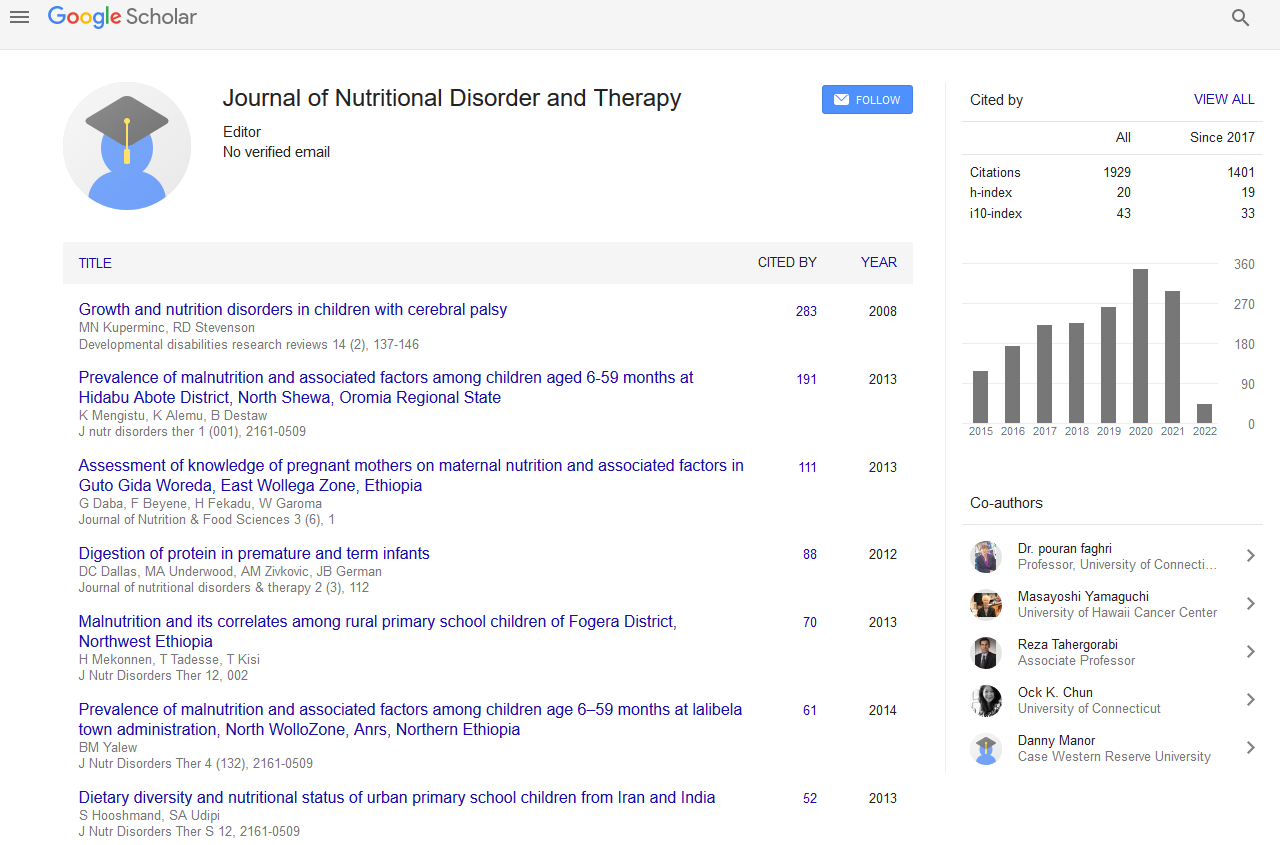Indexed In
- Open J Gate
- Genamics JournalSeek
- Academic Keys
- JournalTOCs
- Ulrich's Periodicals Directory
- RefSeek
- Hamdard University
- EBSCO A-Z
- OCLC- WorldCat
- Publons
- Geneva Foundation for Medical Education and Research
- Euro Pub
Useful Links
Share This Page
Journal Flyer

Open Access Journals
- Agri and Aquaculture
- Biochemistry
- Bioinformatics & Systems Biology
- Business & Management
- Chemistry
- Clinical Sciences
- Engineering
- Food & Nutrition
- General Science
- Genetics & Molecular Biology
- Immunology & Microbiology
- Medical Sciences
- Neuroscience & Psychology
- Nursing & Health Care
- Pharmaceutical Sciences
Obesity prevention in preschool children: healthy caregivers-healthy children
JOINT EVENT: 13th International Congress on Advances in Natural Medicines Nutraceuticals & Neurocognition & 14th International Conference on Clinical Nutrition
July 27-29, 2017 Rome, Italy
Ruby Natale
University of Miami School of Medicine, USA
Posters & Accepted Abstracts: J Nutr Disorders Ther
Abstract:
There is a need for pediatric nutrition based programs that target young children in an effort to reduce the obesity epidemic. Obesity in children, is associated with elevated cholesterol and elevated blood pressure and tracks from childhood to adulthood. Currently, the science needed to promote successful implementation of primary prevention practices, under naturally occurring conditions, is poorly developed. We describe here the outcomes of �??Healthy Caregivers, Healthy Children (HC2)�?� an obesity prevention program with young children. A randomized controlled trial was conducted with 1101 children aged 2 to 5 years old. The intervention focused on three components to support and encourage cardiovascular health: environmental changes related to food consumption and physical activity in the centers, a classroom curriculum, and family and teacher education regarding healthy role modeling behaviors. The primary outcome was the child�??s body mass index (BMI). At 6 months post-intervention, children in the intervention centers were significantly more likely to consume fresh vegetables fruits (p=.006) and vegetables (p=.001) as compared to the control centers. 91% of parents who increased buying vegetables had children whose BMIs either stayed the same or improved (p=.01), and 92% of parents who increased buying fruit had children whose BMI either stayed the same or improved (p=.03). The goal of this project was to develop and evaluate a multifaceted obesity prevention intervention, targeting low-income, multiethnic children aged 2 to 5 years. These findings support efforts to implement healthy weight programs in the childcare setting as a means of primary prevention.


